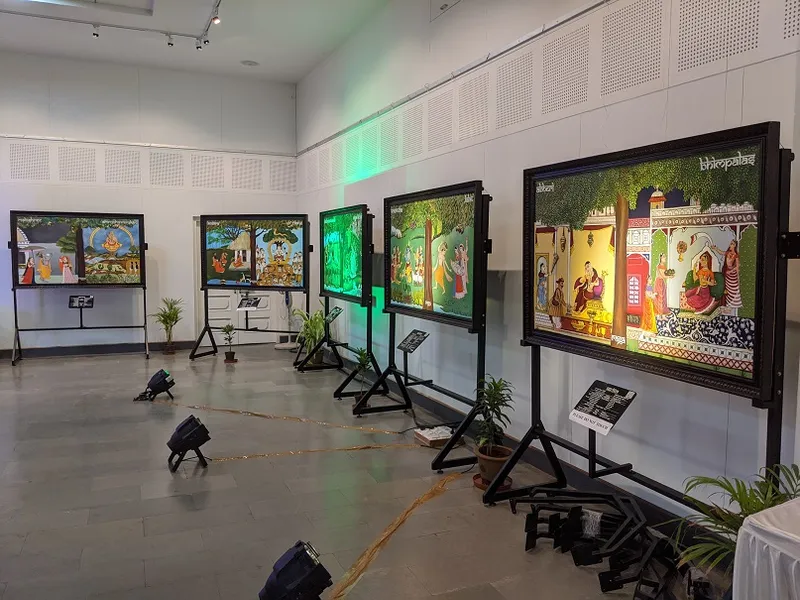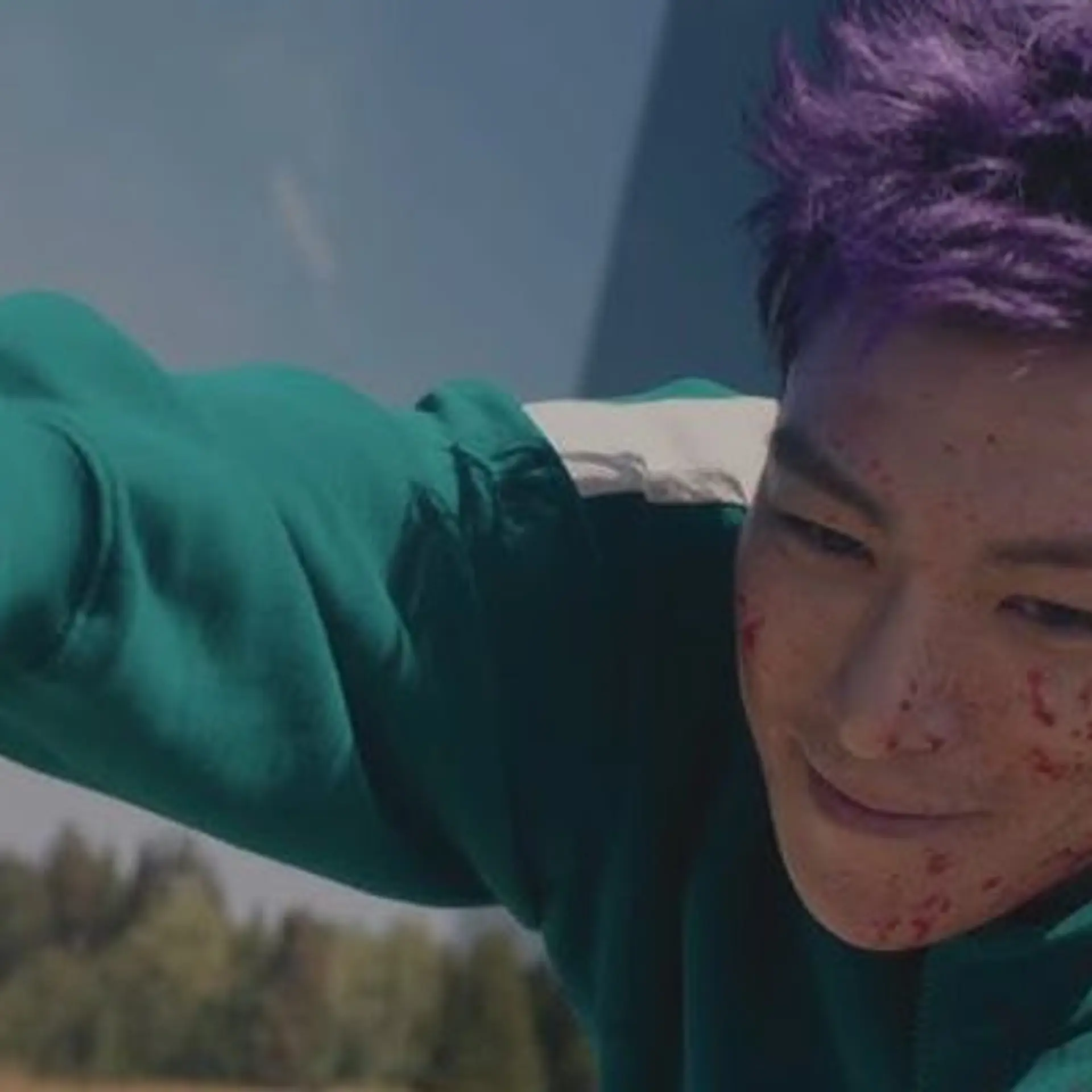Art in times of change and turbulence: HN Suresh and the Svara Raga Chitra exhibition
This unique exhibition of paintings showcases the inspiring traditions of Indian classical music, and its messages and therapeutic effects during these troubled times.
Launched in 2014, PhotoSparks is a weekly feature from YourStory, with photographs that celebrate the spirit of creativity and innovation. In the earlier 460 posts, we featured an art festival, cartoon gallery. world music festival, telecom expo, millets fair, climate change expo, wildlife conference, startup festival, Diwali rangoli, and jazz festival.

Music and visual arts are not just means of livelihood or amusement, but an effective form of therapy and source of solace. Indian culture is rich in such practices, which need to be researched and evangelised, according to the organisers and artists of a unique exhibition.
Titled ‘Svara Raga Chitra: The Singing Portraits,’ the artworks are conceptualised and executed by renowned artist HN Suresh, Director, Bharatiya Vidya Bhavan, Bengaluru. Showcased at Karnataka Chitrakala Pairshath earlier this month, the paintings are based on the Sri-Tattva-Nidhi treatise of former Maharaja Krishnaraja Wodeyar III of Mysuru (1799-1868), who was himself an artist and art patron.
Heritage and education
“The artworks are a pictorial representation of svaras and ragas, pointing to the association of seven svaras with animals, rivers, colours and birds, just as the seven chakras are associated with a particular svara,” HN Suresh explains, in a chat with YourStory.
For example, the svara associations are Sa (peacock before rains), Re (cow), Ga (goat), Ma (heron), Pa (nightingale), Dha (horse), and Ni (elephant). Each of these is depicted in a colourful painting, with accompanying digital content.
“Eight Carnatic ragas and their Hindustani equivalents have been pictorially depicted on either side of a tree, which represents Indian classical music,” Suresh adds. Music therapy has been incorporated in the messaging as well. These multiple linkages are a “feast for the senses,” Suresh proudly says.
For example, the painting for Raga Ramakali – Raag Ramkali conveys the romantic mood of the music. The artwork for Raga Vasantha – Raag Lalat depicts the vibrancy and joy of spring.
The exhibition reflects the high pedestal of holistic and aesthetic knowledge in Indian culture, which needs to be preserved and promoted. The exhibition thus has educational, research and reference components as well, Suresh explains.
The exhibition is an inter-linking mosaic of visual arts and music; analog and digital mediums; and symbols reflecting the cosmos and nature. Each intricate artwork is a blend of painting and mixed-media components such as shiny baubles.
Musical forms described in each painting can also be accessed online via QR codes. This wealth of knowledge is thus brought into the digital domain for younger audiences as well.
Creativity and therapy
At the exhibition, a 70-page coffee-table book (edited by Jyothi Raghuram) and music CD were also released. The artworks are a “weave of tradition and creativity,” writes musicologist Vidwan Dr TS Satyavathi.
“They educate, elevate, and widen one’s perception and sensibilities,” she adds. “Art is not just for entertainment and amusement,” Saytavathi emphasises. It helps people evolve and reach fruition.
The paintings also highlight the consonance between North Indian (Hindustani) and South Indian (Carnatic) classical music. The script and music are composed by TS Satyavathi. The juagalbandi features Carnatic forms rendered by vocalist Maruti Prasad, and Hindustani by Omkarnath Hawaldar; other vocalists are Bharathi Pratap and Ashwini Sathish.
The combination of painting and music is a creative interpretation by all the artists, and extends to new dimensions the earlier traditions like Ragamala paintings of 16th and 17th century India.
Ragas evoke emotions, moods, and feelings, and also open up visual possibilities and mental imagery, explains music scholar Dr R Ganesh. “The silent poetry of the paintings has been made fragrant with melodious interludes,” he adds. The panoramic exhibition conveys a “happy series of notes, melodies and bright visuals.”
The Sri-Tattva-Nidhi iconography adds lyrical and romantic elements to the paintings, according to BVK Sastry. They can be regarded as a “pictorial digest” of ancient knowledge.
Music forms such as Indian classical music are highly regarded for creating positive vibrations, a sense of well-being, soothing effects, elevated awareness, and meditative moods.
“Music is an astounding art,” explains music therapist Dr Geetha Bhat. Its combination with math is regarded as beneficial for creativity, and balances connections between the brain’s hemispheres. Music has healing power and can also unite people around the world.
She calls for more music education in schools to strengthen cognitive development and communication skills. Through its structure and sentiments, Indian classical music has transformative power and can “work wonders, especially on those with special needs,” Geetha emphasises.
Music has been shown to have positive effects on breathing and heartbeat, and reduction of anxiety, she adds. “It increases concentration and memory, disciplines the mind, and inclines one towards spirituality,” Geetha explains.
The road ahead
“The vision behind the exhibition is to spur awareness and interest about our rich cultural heritage, and integrate art and music,” Suresh explains. This is the fifth in his series of paintings on this theme.
The current exhibition will also be taken to other cultural centres in Bengaluru, and on to other cities such as Delhi, Mumbai, Chennai, and Thiruvananthapuram. “Art and cultural institutions should come forward and take up further research. They should popularise our eternal classical art and music forms for the betterment of humanity,” he advocates.
New digital media should be leveraged to reach out to new audiences and popularise these art forms, which should not end up only in museums in future. Suresh also plans to start art appreciation programmes, skill development initiatives, and cultural outreach progammes.
“The unifying and uplifting messages of Indian classical music and art are more relevant now than ever before, and can help find solutions to present-day problems,” he emphasises. These traditions and the wisdom of philosophers are time-tested and should not fade into oblivion, Suresh signs off.
Now, what have you done today to pause in your busy schedule and harness your creative core during times of turbulence?























Got a creative photograph to share? Email us at [email protected]!
See also the YourStory pocketbook ‘Proverbs and Quotes for Entrepreneurs: A World of Inspiration for Startups,’ accessible as apps for Apple and Android devices.







